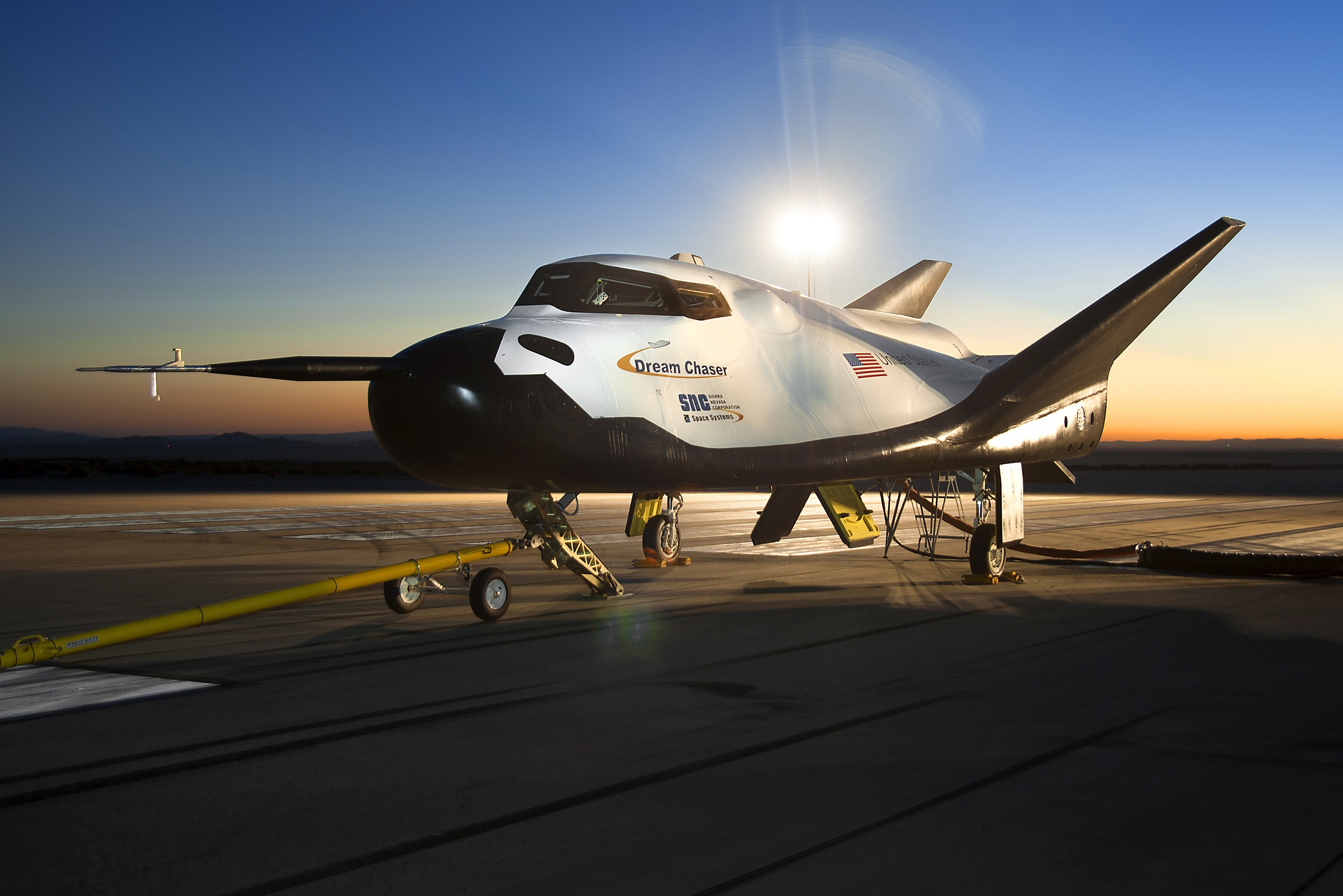Dream Chaser - Part One of Two Parts
Part One of Two Parts:
Today I am going to blog about the Dream Chaser (DC), a winged mini-shuttle under development by the Sierra Nevada Corporation. The DC is a reusable crewed suborbital and orbital lifting body spaceplane. The DC was originally designed to be launched on top of a heavy launch vehicle. After missions, the DC will land horizontal on conventional runways. The Dream Chaser design considered by NASA was thirty feet long with a twenty three foot wingspan. It would be about to carry up to a crew of seven for a two hundred and ten day missions.
The "lifting body" concept has a long history. The X-20 Dyna-Soar concept was developed in the U.S. in 1957. In 1966, Northup researched the M2-F2 and Martin X-23 Prime lifting body designs. The DC is based the 1990 NASA HL-20 lifting body design which evolved from the NASA HL-10 design from the around 1970. The DC design including ideas taken from the Soviet Mikoyan-Gurevich MiG-105 military space plane design which was a response to the X-20 Dyna-Soar research.
The DC uses reaction control thrusters which burn ethanol-based fuel which has the benefit of not being an explosive volatile substance. This means that the DC can be handled by ground crews immediately after landing as opposed to the Space Shuttle which needed to have the fuel removed before work by ground crews. The thermal shielding is replaced as a whole instead of tile by tile as with the Space Shuttle heat shield. The orbital propulsion system consists of twin hybrid rocket engines. The engines burn hydroxyl-terminated polybutadiene and nitrous oxide. Both of these substances are non-toxic and easy to store which makes them safer than liquid fuels used in most rockets. The hybrid engines can be stopped and started and their thrust can be controlled.
The Dream Chaser name has been used twice by Jim Benson at SpaceDev, the originator of both designs. One design was a for an orbital craft based on the HL-20. SpaceDev tried to get NASA to consider this Dream Chaser for a mini-shuttle and for the NASA Commercial Orbital Transportation Services program. (COTS) When the Dream Chaser was not selected for NASA programs, Jim Benson started Benson Space Company to create another Dream Chaser for suborbital tourist flights. In 2007, SpaceDev partnered with the United Launch Alliance to work on the idea of launching their Dream Chaser orbital craft on an Atlas V booster. Later in 2007, SpaceDev signed an agreement with NASA.
Following the death of Jim Benson in 2008, SpaceDev was acquired by the Sierra Nevada Corporation. In 2010, SNC was awarded a twenty million dollar contract by NASA under the Commercial Crew Development phase 1 (CCDev 1) program to develop their Dream Chaser. SNC completed the four required milestones on schedule including program implementation plans, manufacturing readiness capability, hybrid rocket test fires, and the preliminary structure design. In 2011, NASA gave SCN eighty million dollars for CCDev 2 work on the Dream Chaser. More milestones were met and in 2012, SCN got two hundred and twelve million dollars from NASA for Dream Chaser development under the Commercial Crew Integrated Capability program.
(See Part Two)
Dream Chaser:
